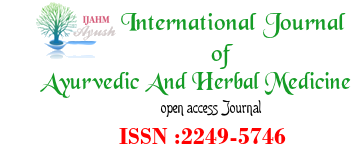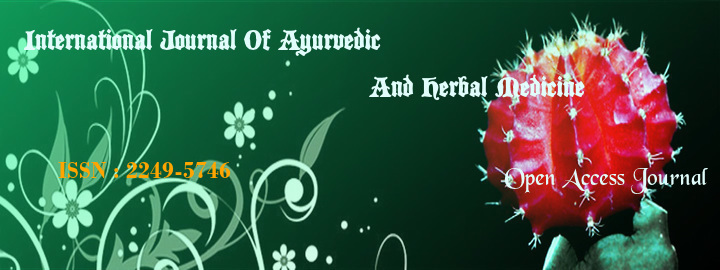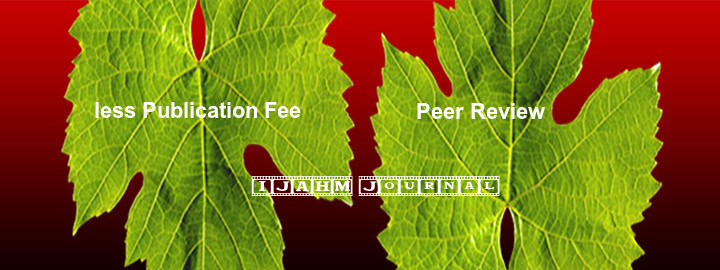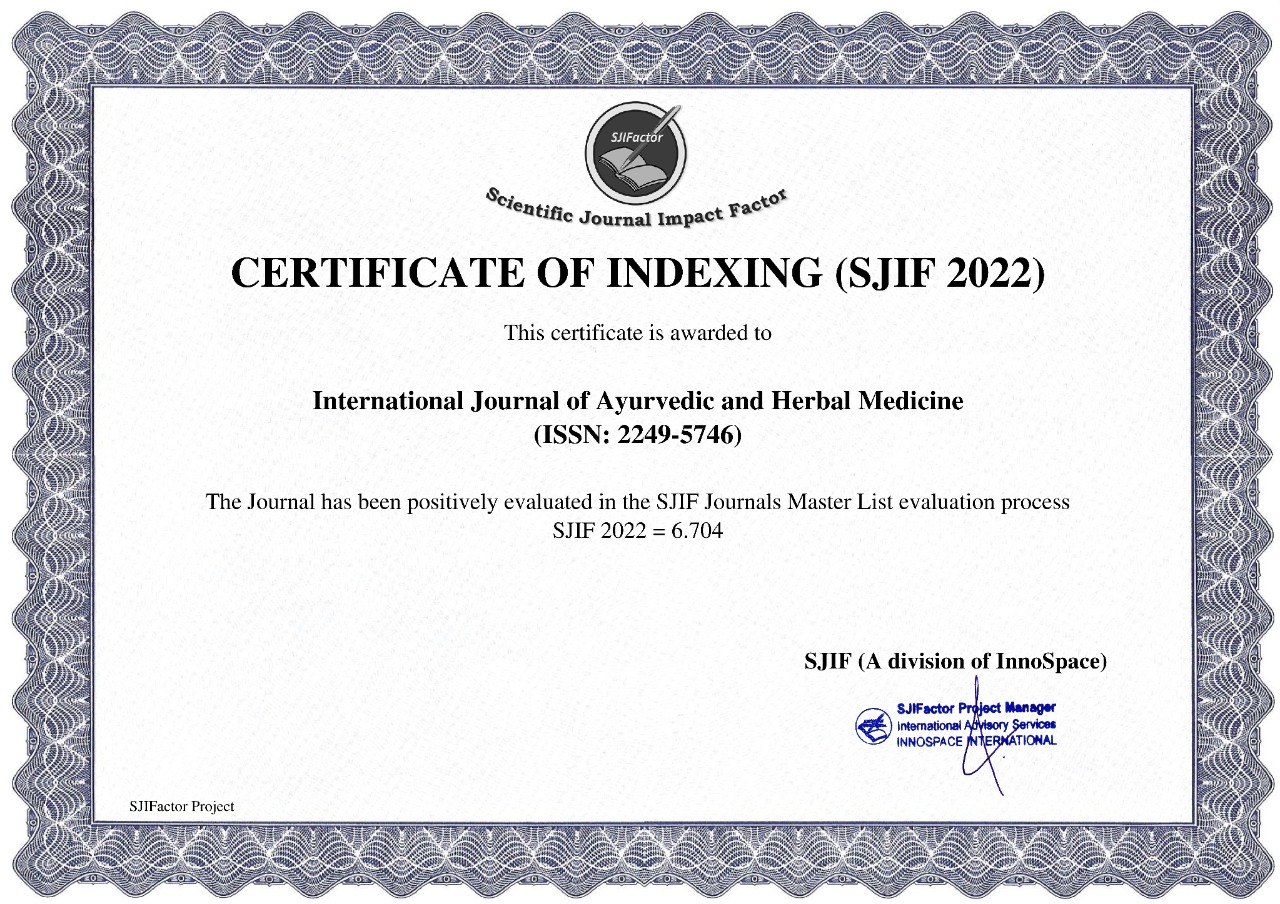


1Rajeev Ranjan , 2Parvesh Kumar , 3Ashish B. Goswami
DOI : http://dx.doi.org/10.18535/ijahm/v7i4.24
1Assistant Professor , Department of Agadtantra , Dr. K.G Dwivedi Ayurveda Medical College, Sarmau, Jhansi, U.P.
2Assistant Professor , Department of Agadtantra , Gaur Brahman Ayurvedic College, Brahmanwas , Rohtak, Haryana.
3Assistant Professor , Department of Agadtantra , Patanjali Bhartiya Ayurvigyan Evam Anusandhan Sansthan, Haridwar, Uttarakhand.
Corresponding Author: *Dr. Parvesh Kumar,
Assistant Professor , Department of Agadtantra , Gaur Brahman Ayurvedic College, Brahmanwas, Rohtak, Haryana.
ABSTRACT:
Nyagrodha (Ficus bengalensis Linn.), Udumbara (Ficus glomerata Linn.), Ashwatha (Ficus religiosa Linn.), Parisha (Thespesia populnea Soland Ex Correa) and Plaksha (Ficus infectoria Roxb.) the stem barks of these five plants known as Panchavalkal in Ayurveda (Sample A). This is found previously that there is a mention of the use of Shirish (Albizzia lebbeck Benth.) and Vetasa (Salix caprea Linn.) as a substitute of Udumbara and Parisha in the Panchavalkal (B) recognized by Arundatta the commentator of Ashtanga Hrudaya, which belong to different families, genera & species and with different active chemical. So this study has been planned to comparatively explore and evaluate the poly herbal combination Panchavalkal (A) and (B) with dissimilar set of herbs to assess their antimicrobial properties (Agar well diffusion method) against Candida albicans, Escherichia coli and Staphylococcus aureus using Methanolic extract of formulations in three dilutions (12.5, 25 & 50mg/ml). Gentamycin (antibacterial) and Griseofulvin (antifungal) used as standard drug. Antimicrobial activity found to be significant when compared between sample A & B at each concentration with related standard drug ZOIs. Statistical analysis shows that the P values are lower than 0.05 which confirms that comparisons of results are non-significantly differ with each other which suggest both the samples having same antimicrobial activity at each concentration.
Keywords – Ayurveda, Panchavalkal, Antimicrobial
Reference:
1. Tripathi Hariharaprasad, editor, Madanapala Nighantu, Phala varga, Varanasi: Chaukhambha Krushnadasa Acadamy; 1998. pp. 71
2. Susruta, Susruta Samhitha. [ed.] Yadav T. Reprint. Varanasi: Chaukhamba Surbharti prakashan; 2008. Sutra Sthansthana 1/7. pp. 2
3. Vagbhata. Astangahridayam. [ed.] Harishashtri Paradkar. Reprint. Varanasi: Krishnadas Academy, 2000. Uttartantra 35/1. pp. 902
4. Agnivesha. Charaka Smahita. [ed.] Yadav T. reprint. Varanasi: Chaukhmba Publication, 2009. Chikitsasthana 1/126. pp. 23
5. SharmaAcharya Priyavrat. Dravyaguna- vigyan. volume -2nd [ed.] Reprint Varanasi: Chaukhambha Bharti Academy, 2010.p-256
6. Dravyaguna vijnana, volume - 3rd [ed.]Pandey Dr. GyanendraReprint Varanasi. Chowkhamba Krishnadas Academy, 2004.p.706
7. Purohit P. et al. Assessment of antibacterial activity and phytochemical screening of Hemidesmus indicus root extracts. UK Journal of Pharmaceutical and Biosciences Vol. 2(6), 67-72, 2014
8. Perez C, Paul M, Bazerque P. An antibiotic assay by the agar-well diffusion method. Acta Biol Med Exp 15: 113-115, 1990.
9. Nair R, Chanda S. Anticandidal activity of Punica granatum exhibited in different solvents. Pharm Biol 43: 21-25. 2005.
.
index























